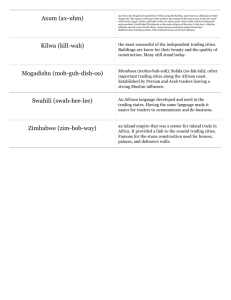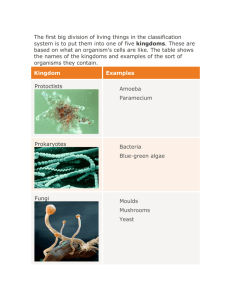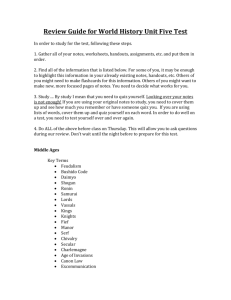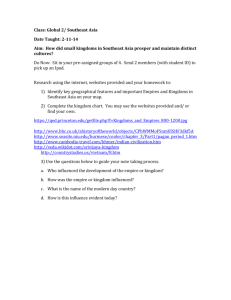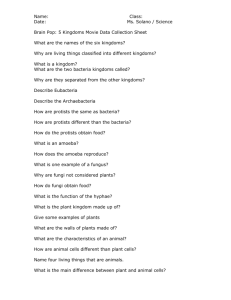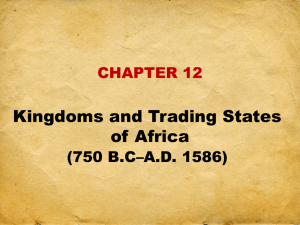Presentation
advertisement
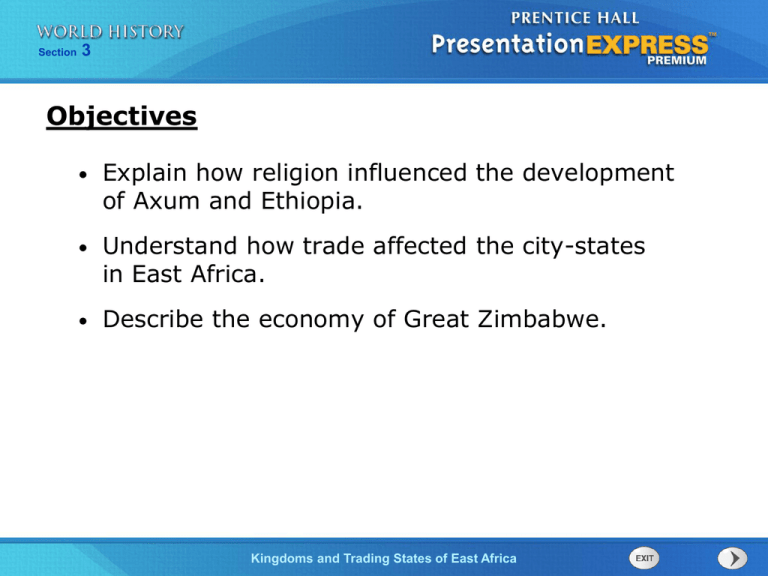
Section 3 Objectives • Explain how religion influenced the development of Axum and Ethiopia. • Understand how trade affected the city-states in East Africa. • Describe the economy of Great Zimbabwe. Kingdoms and Trading States of East Africa Section 3 Terms and People • Axum – trading center, and powerful ancient kingdom in northern present-day Ethiopia • Adulis – an Axum port city on the Red Sea, one of two major cities in the kingdom that commanded a trade network in the region • Ethiopia – a Greek term used by Axumite kings to refer to their kingdom Kingdoms and Trading States of East Africa Section 3 Terms and People (continued) • King Lalibela – the ruler of Ethiopia in the early 1200s • Swahili – an East African language and culture that emerged by the 1000s from a combination of African, Asian, and Arabic influences • Great Zimbabwe – powerful East African medieval trade center and city-state between 900 and 1500. Located in southern present-day Zimbabwe Kingdoms and Trading States of East Africa Section 3 What influence did religion and trade have on the development of East Africa? The kingdom of Axum expanded across East Africa after 100 B.C. This civilization gained control of the Red Sea and grew rich from trade. As East Africans traded and exchanged ideas with people from Asia and the Middle East, a new culture and language emerged. Kingdoms and Trading States of East Africa Section 3 The kingdom of Axum reached from the mountains in East Africa to the Red Sea and flourished between 300 B.C. and A.D. 600. • The people there were descended from African farmers and Middle Easterners. • The two cultures blended and created a new language called Geez. Kingdoms and Trading States of East Africa Section 3 Axum grew very wealthy through trade. • One of its main cities, Adulis, was a port on the Red Sea. Here, goods such as ivory, animal hides, and gold were brought to market. • Axum controlled a triangular trade network between Africa, India, and the Mediterranean. Kingdoms and Trading States of East Africa Section 3 Axum converted to Christianity in the 300s. • This conversion strengthened the kingdom’s ties with North Africa and the Mediterranean. • However, when Islam spread in the 600s, Axum became isolated and declined. Kingdoms and Trading States of East Africa Section 3 Though Axum faded, its culture did not disappear. Rather, its legacy survived in medieval Ethiopia. • King Lalibela came to power in Ethiopia in the early 1200s. • He directed the building of Christian churches, carved down into solid rock. Kingdoms and Trading States of East Africa Section 3 Ethiopian Christians kept ties with the Holy Land in the Middle East. Some made pilgrimages to Jerusalem. Ethiopian Christianity absorbed local customs over time. Kingdoms and Trading States of East Africa Section 3 A rich cultural mix existed along the East African coast. • Phoenician, Greek, Roman, Indian, Muslim, and Asian traders had visited since ancient times. • Sailors learned that monsoon winds would carry them from India to Africa each year. The rulers of East African city-states welcomed ships. Kingdoms and Trading States of East Africa Section 3 Trade linked distant ports in Africa, Asia, and the Middle East. Kingdoms and Trading States of East Africa Section 3 This vibrant trading culture on the coast of East Africa led to the emergence of a new language. • Swahili developed as greater numbers of people began to settle in East Africa. • Arabic words were absorbed into the Bantu-based language to create Swahili, an Arabic word meaning “of the coast.” Kingdoms and Trading States of East Africa Section 3 South of the coastal city-states, a great inland empire existed. • Bantu-speaking people who lived in this region between 900 and 1500 built huge stone towers in their capital city. • The ruins left behind today are called Great Zimbabwe. Archaeologists are working now to learn more about this civilization. Kingdoms and Trading States of East Africa Section 3 Great Zimbabwe was part of an extensive trade network. It reached its height around 1300. • It had artisans and skilled builders. The ruler was probably a god-king with a large court. • Zimbabwe declined by 1500, probably due to civil war and slowing trade. Kingdoms and Trading States of East Africa Section 3 Section Review QuickTake Quiz Know It, Show It Quiz Kingdoms and Trading States of East Africa
